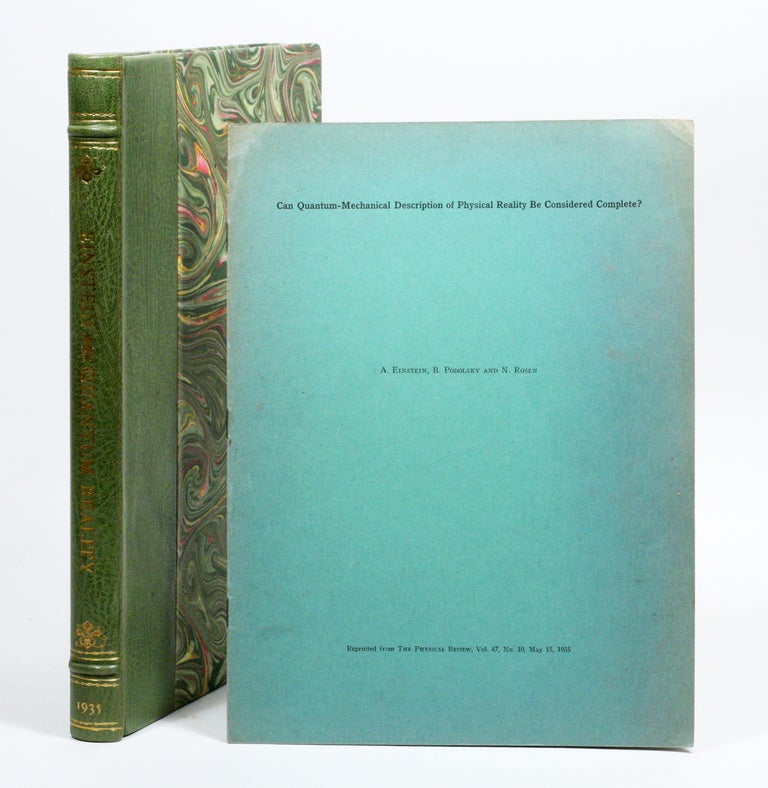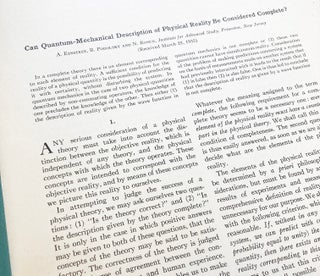Can Quantum-Mechanical Description of Physical Reality Be Considered Complete?
"We are thus forced to conclude that the quantum-mechanical description of physical reality given by wave functions is not complete."
FIRST EDITION, EXTREMELY RARE OFFPRINT, of one of the most discussed and debated papers of modern physics.
In 1935, Einstein published a paper with coauthors Boris Podolsky and Nathan Rosen entitled, “Can Quantum-Mechanical Description of Physical Reality Be Considered Complete?” It became known as the EPR paper after the initials of the authors’ last names. The paper described a thought experiment in which two quantum particles interact in a way that links their spatial coordinates and linear motion. (This new concept was later to be named “quantum entanglement.”)
The authors described how determining the position (or momentum) of one particle would instantaneously identify the other particle’s respective position (or momentum) without it being observed or measured. This contradicted the prevailing interpretation of quantum theory, based on the work of Niels Bohr and others, that maintained the atomic realm consists only of probabilities until measurements or observations are made. Einstein believed physical entities exist even when not observed, and their parameters can be determined precisely.
The argument introduced a paradox that could be resolved only if reality at the quantum level was not local or if information between the two conjoined particles traveled faster than the speed of light (an impossibility according to general relativity). Einstein believed that reality, even in the atomic world, was local. He disparagingly called the instantaneous interaction between the widely separated but linked particles “spooky action at a distance.”
In 1964, nine years after Einstein’s death, the physicist John Stewart Bell proposed a theorem disproving locality. He modified the EPR thought experiment so that it could be tested experimentally. Subsequent experimental data showed that quantum entanglement does exist and is non-local.
Although the EPR paper’s conclusions were ultimately disproven, the concept of quantum particle entanglement introduced in it furthered the development of quantum theory. The EPR paper has become one of the most cited and discussed of all Einstein’s works. Einstein continued challenging the indeterminism of quantum theory for the rest of his life, searching for an underlying, deterministic theory to unify quantum theory and general relativity.
Offprint from Physical Review, pp.777-780 Vol. 47, No. 10, May 15, 1935. Quarto, original green wrappers; custom box. A hint of toning to extremities (as usual); a few creases at edges, otherwise fine. Scarce.
Check Availability:
P: 212.326.8907
E: michael@manhattanrarebooks.com



